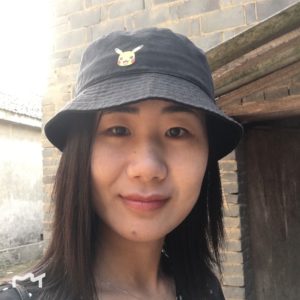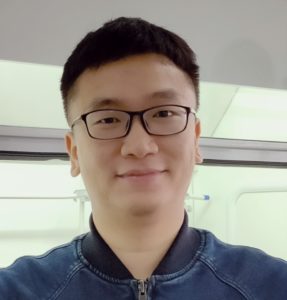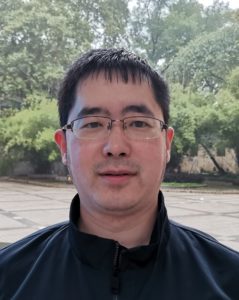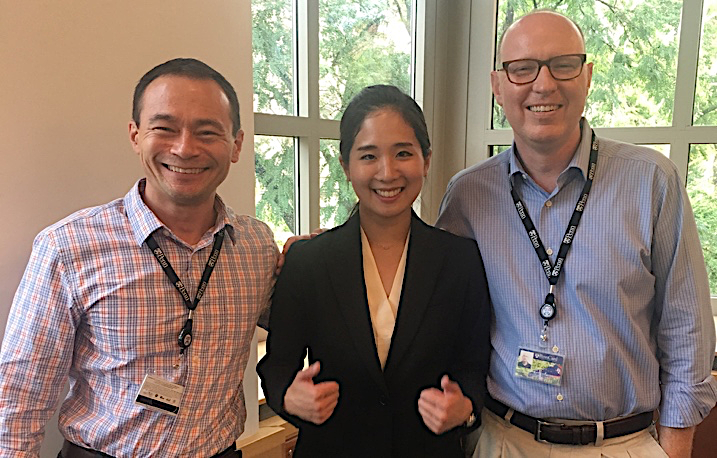The Organic & Biomolecular Chemistry Editor’s collection is a showcase of some of the best articles published in the journal, hand selected by our Associate Editors and Editorial Board members. For this month’s selection, Associate Editor Kate Jolliffe has highlighted some of her favourite recent works. Take a look at what she thought of the articles below, and find out more about the research and the researchers behind the papers in our interviews with the authors.
Kate’s Selection:
Rational Design of Small Molecule Fluorescent Probes for Biological Applications
Joomyung V. Jun, David M. Chenoweth and E. James Petersson
 Kate’s comment: “New fluorophores are highly sought after for the development of tools for biological applications. This review provides a nice overview of the functional fluorescent probes and the factors effecting their photophysical properties. Importantly it provides general guidelines for the rational design of new fluorophores with tailored photophysical properties for applications in chemical biology.”
Kate’s comment: “New fluorophores are highly sought after for the development of tools for biological applications. This review provides a nice overview of the functional fluorescent probes and the factors effecting their photophysical properties. Importantly it provides general guidelines for the rational design of new fluorophores with tailored photophysical properties for applications in chemical biology.”
Find out more in our interview with the authors
One-pot synthesis of porphyrin-based [5]rotaxanes
Pablo Martinez-Bulit, Benjamin H. Wilson and Stephen J. Loeb
 Kate’s comment: “The synthesis of mechanically interlocked molecules with high degrees of complexity frequently requires multiple synthetic steps, which limits the ability to explore their functionality. Here, Loeb and co-workers report a clever synthesis of porphyrin containing [5]rotaxanes , in a one-pot reaction, opening the door to the synthesis of a wide range of mechanically locked architectures that can be fine-tuned for specific applications.”
Kate’s comment: “The synthesis of mechanically interlocked molecules with high degrees of complexity frequently requires multiple synthetic steps, which limits the ability to explore their functionality. Here, Loeb and co-workers report a clever synthesis of porphyrin containing [5]rotaxanes , in a one-pot reaction, opening the door to the synthesis of a wide range of mechanically locked architectures that can be fine-tuned for specific applications.”
Find out more in our interview with the authors
Absolute handedness control of oligoamide double helices by chiral oxazolylaniline induction
Ling Yang, Chunmiao Ma, Brice Kauffmann, Dongyao Lia and Quan Gan
Kate’s comment: “The incorporation of a chiral group at the terminus of an aromatic oligoamide strand has been shown to provide complete chiral control in the self-assembly of synthetic antiparallel double helices from quinoline containing foldamers, opening opportunities for the future exploitation of these materials as chiral sensors or catalysts.”
Find out more in our interview with the authors
Facile synthesis of sulfotyrosine-containing α-conotoxins
Changpeng Li and Chunmao He
 Kate’s comment: “Tyrosine sulfation is an important post-translational modification that is believed to modulate biological function but is underexplored because of difficulties with both the isolation and synthesis of sulphated peptides. Here, He and Li demonstrate the facile synthesis of sulfated conotoxins by combining the sulfate ester deprotection and folding steps into a one pot procedure. Importantly they show that, in the case of conotoxins, the sulfate ester is not as acid labile as expected.”
Kate’s comment: “Tyrosine sulfation is an important post-translational modification that is believed to modulate biological function but is underexplored because of difficulties with both the isolation and synthesis of sulphated peptides. Here, He and Li demonstrate the facile synthesis of sulfated conotoxins by combining the sulfate ester deprotection and folding steps into a one pot procedure. Importantly they show that, in the case of conotoxins, the sulfate ester is not as acid labile as expected.”
Find out more in our interview with the authors
Meet the Editor:



















